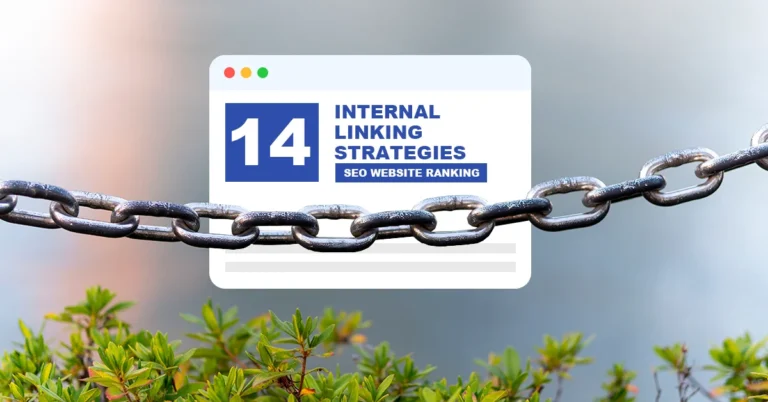
Understanding SEO Insights and Their Importance
In the realm of digital marketing, understanding SEO insights is crucial for optimising online visibility and driving organic traffic to websites. But what exactly are SEO insights, and why do they matter? Let’s delve into the definition, importance, and their relevance.
What Are SEO Insights?
SEO insights encompass a range of data-driven observations and analyses that provide valuable information about website performance, user behaviour, and search engine ranking factors. These insights are derived from various sources such as web analytics tools, keyword research, user engagement metrics, and competitive analysis. The primary goal of gathering SEO insights is to make informed decisions that enhance a website’s search engine visibility and overall performance.
The significance of these insights lies in their ability to uncover patterns, trends, and opportunities that can be leveraged to improve a website’s ranking on search engine results pages (SERPs). By examining data related to user behaviour, keyword performance, backlink profiles, and content engagement metrics, website owners can gain a comprehensive understanding of their online presence and identify areas for improvement.
Why SEO Insights Matter for Digital Marketers
For marketers aspiring to pursue careers in digital marketing or entrepreneurship, grasping the fundamentals of SEO insights can lay a solid foundation for future endeavours. Understanding how search engines operate and the factors that influence website visibility can foster critical thinking skills and an analytical mindset. Moreover, as the digital landscape continues to evolve rapidly, proficiency in leveraging SEO insights can empower one to create impactful online content and effectively reach their target audience.
Furthermore, statistics reveal compelling reasons why high school students should pay attention to SEO insights. For instance:
- 73% of all clicks from online searches go to organic results.
- The top-ranked result on Google’s organic search receives an average click-through rate (CTR) of 27.6%.
- About 33% of overall traffic to ecommerce sites comes from organic search.
- 47% of marketers plan to invest more in SEO in 2024; 49% consider SEO the most effective digital marketing channel.
These figures underscore the immense value of understanding SEO insights, not only for professional growth but also for making informed decisions in today’s digital landscape.

The Role of User Engagement in SEO
User engagement is a pivotal factor in determining the success and visibility of a website. Understanding the nuances of user engagement and its impact on search engine optimization (SEO) is essential for digital marketers and website owners alike.
Defining User Engagement
User engagement refers to the interaction and involvement of visitors with a website’s content, features, and functionalities. It encompasses various forms of interaction, including but not limited to:
Types of User Engagement
- Content Engagement: This involves users spending time consuming and interacting with the content on a website, such as reading articles, watching videos, or exploring infographics.
- Social Media Engagement: Users engaging with a website’s social media posts through likes, shares, comments, and direct messages contribute to social media engagement.
- Interactive Engagement: When users participate in quizzes, polls, surveys, or interactive elements on a website, it reflects their interactive engagement.
- Transactional Engagement: Actions such as making purchases, signing up for newsletters, or filling out contact forms demonstrate transactional engagement.
Understanding these different types of user engagement provides insights into how visitors interact with a website and what aspects capture their attention and interest.
How User Engagement Affects SEO
The relationship between user engagement and SEO is symbiotic; one significantly influences the other. Search engines prioritise websites that offer valuable and engaging experiences to users. Here are some examples and case studies that illustrate the impact of user engagement on SEO:
Case Study: Elevating Content Success
- In an analysis conducted by digital marketing experts at Buenito Interactive Agency, it was found that websites with higher average session durations and lower bounce rates consistently ranked higher on search engine results pages (SERPs). This underscores the correlation between user engagement metrics and improved rankings.
Case Study: The Power of User Experience in SEO
- Research conducted by leading SEO analysts revealed that optimising website speed not only enhances user satisfaction but also positively impacts search engine rankings. Websites that load quickly tend to have higher user engagement metrics, leading to improved SEO performance.
These case studies demonstrate how user engagement metrics directly influence a website’s ranking on search engines. Websites that prioritise creating engaging experiences for their visitors often reap the rewards in terms of improved visibility and organic traffic.

Analysing Traffic for SEO Insights
In the realm of search engine optimization (SEO), traffic serves as a fundamental metric that reflects the volume and quality of visitors to a website. Understanding the nuances of traffic and its significance in SEO is essential for optimising online visibility and driving organic user engagement.
The Importance of Traffic in SEO
Different types of web traffic play a crucial role in determining a website’s performance and relevance within search engine results. These include:
- Organic Traffic: Visitors who land on a website through unpaid search results.
- Direct Traffic: Users who directly type in the website’s URL or access it through bookmarks.
- Referral Traffic: Visitors who arrive at a website by clicking on external links from other websites.
- Social Media Traffic: Users directed to a website from various social media platforms.
Each type of traffic provides valuable insights into user behaviour, preferences, and sources of online visibility. By analysing these traffic sources, website owners can gain a comprehensive understanding of their audience and tailor their content to meet their needs effectively.
Tools and Techniques for Traffic Analysis
One of the most widely used tools for traffic analysis is Google Analytics, which offers robust features for tracking, measuring, and analysing web traffic. This platform provides detailed insights into various aspects of user behaviour, including page views, session durations, bounce rates, and conversion metrics. Additionally, it allows users to segment traffic data based on parameters such as demographics, devices, and referral sources.
Apart from Google Analytics, there are several other tools available for comprehensive traffic analysis:
- SEMrush: This tool offers in-depth insights into organic and paid search traffic while providing competitive intelligence and keyword research capabilities.
- Ahrefs: Known for its backlink analysis features, Ahrefs also provides detailed traffic estimations for specific domains along with keyword ranking data.
- Moz Pro: Moz Pro offers valuable insights into domain authority, link profiles, and keyword rankings while also providing traffic analytics features.
By leveraging these tools effectively, website owners can gain actionable insights into their web traffic patterns, identify areas for improvement, and refine their SEO strategies accordingly.
The evidence supports the significance of effective traffic analysis in SEO performance improvement through key differences observed before and after implementing SEO strategies:
Comparative Data:
- Increase in organic traffic by 652% in just seven days highlights the immediate impact of strategic SEO efforts.
- A 100% increase in web traffic within the first three months of content marketing and continuous SEO efforts emphasises the long-term benefits of sustained optimization.
- Achieving a remarkable 1744% ROI In 8 Months underscores the substantial returns that result from effective SEO practices.
These compelling statistics underscore the transformative power of strategic SEO initiatives in driving significant improvements in web traffic, ultimately leading to enhanced online visibility and user engagement.

Leveraging Analytics for Improved Performance
In the realm of search engine optimization (SEO), leveraging analytics plays a pivotal role in enhancing website performance and driving organic traffic. By harnessing the power of data-driven insights, website owners and digital marketers can make informed decisions to optimise their online visibility and user engagement.
Introduction to Analytics in SEO
Analytics in the context of SEO involves the systematic collection, measurement, and interpretation of data related to website performance, user behaviour, and search engine ranking factors. Understanding the basics of analytics is essential for gaining actionable insights that inform strategic SEO initiatives.
Web analytics tools such as Google Analytics, SEMrush, and Ahrefs offer robust features for tracking various aspects of web traffic, user engagement metrics, keyword performance, and backlink profiles. These tools provide valuable information about audience demographics, devices used for accessing websites, referral sources, and popular content.
By delving into these analytics platforms, website owners can gain a comprehensive understanding of their online presence and identify opportunities for improvement.
Using Analytics to Drive SEO Strategy
Real-world applications of analytics in SEO encompass a wide range of strategies aimed at optimising website visibility and driving user engagement.
Real-World Applications:
- Content Performance Analysis: Analytics tools enable website owners to assess the performance of individual pieces of content based on metrics such as page views, average session durations, bounce rates, and social media shares. By identifying high-performing content, website owners can replicate successful strategies and tailor future content creation efforts to resonate with their target audience.
- Keyword Optimization: Through analytics platforms like SEMrush and Ahrefs, website owners can conduct comprehensive keyword research to identify relevant search terms with high search volumes and low competition. This data-driven approach allows for the strategic integration of targeted keywords into website content to improve organic search visibility.
- Conversion Rate Optimization (CRO): Analytics tools provide insights into conversion metrics such as click-through rates (CTRs), form submissions, and e-commerce transactions. By analyzing these metrics, website owners can refine their call-to-action (CTA) strategies, landing page designs, and user flow to enhance conversion rates effectively.
- Competitive Analysis: Leveraging analytics for competitive analysis involves benchmarking a website’s performance against that of its competitors. By comparing key metrics such as organic traffic volumes, keyword rankings, backlink profiles, and social media engagement levels with those of industry peers or competitors’, website owners can identify areas where they lag behind or excel.
- Performance Monitoring: Regular monitoring of web analytics data enables website owners to track the impact of ongoing SEO efforts over time continually. This includes observing trends in organic traffic growth rates, changes in keyword rankings on SERPs (search engine results pages), improvements in user engagement metrics like session durations or pages per session averages.
By incorporating these real-world applications into their SEO strategy development process based on data-driven insights from web analytics tools, website owners can drive continuous improvement in their online visibility, user engagement levels, and overall digital marketing performance.

Demographics: Understanding Your Audience
Understanding the demographics of a website’s audience is instrumental in shaping an effective SEO strategy. By gathering demographic data and applying insights derived from it, website owners can tailor their content to resonate with their target audience effectively.
The Role of Demographics in SEO
Demographics play a pivotal role in informing SEO strategies by providing valuable insights into the characteristics, preferences, and behaviours of a website’s visitors. Gathering demographic data allows website owners to understand factors such as age, gender, location, interests, and browsing habits of their audience. These insights enable the creation of targeted content that aligns with the needs and preferences of specific demographic segments.
How to Gather Demographic Data
One effective method for gathering demographic data is through surveys. According to a survey conducted among over 3,600 SEO professionals, 49% consider SEO the most effective digital marketing channel. The survey also revealed that the majority of individuals working in SEO have been in the industry for 2-4 years, indicating a significant level of experience within the field. Additionally, 56% of respondents consider SEO ‘extremely important’ in the upcoming year.
Surveys serve as helpful tools for SEO analysis as they provide insights into the wants and challenges of a target audience. After collecting survey responses, analysing them can lead to improvements in SEO strategy based on user feedback and preferences.
Applying Demographic Insights for SEO
Once demographic data has been gathered, applying these insights to optimise content for specific audience segments becomes crucial. Tailoring content to resonate with different demographics involves creating personalised experiences that cater to varying interests and needs.
By leveraging analytics tools such as Google Analytics or SEMrush, website owners can gain valuable information about audience demographics including age groups, geographical locations, devices used for accessing websites, and popular content topics among different segments.
Tailoring content to your audience involves creating personalised experiences that cater to varying interests and needs. This approach ensures that content resonates with different demographics effectively while addressing their specific needs and preferences.
Practical Tools for Tracking SEO Performance
In the realm of search engine optimization (SEO), leveraging practical tools is essential for tracking performance, conducting in-depth analysis, and implementing effective strategies. These tools offer valuable insights into keyword research, backlink analysis, content optimization, and overall website performance. Understanding the overview of SEO tools and how to use them effectively is instrumental in driving continuous improvement in online visibility and user engagement.
Overview of SEO Tools
When it comes to tracking SEO performance, a wide array of tools are available to assist website owners and digital marketers in optimising their online presence. These tools can be categorised into free and paid options, each offering distinct features and capabilities.
Free vs. Paid Tools
Ahrefs’ all-in-one SEO tool stands out as a comprehensive solution that offers capabilities such as keyword research, backlink analysis, and content analysis. It is especially helpful for figuring out high-ranking phrases and researching the tactics of rivals. On the other hand, SEOptimer provides a suite of additional tools for testing and analysing specific SEO features like favicons, font sizes, noindex tags, canonical tags, SERP presentation, and keyword ranking.
In addition to these specialised tools, popular platforms such as Google Analytics, SEMrush, Moz, and Ahrefs are widely recommended for conducting comprehensive SEO analysis. These platforms offer robust features for tracking web traffic patterns, measuring user engagement metrics, identifying high-performing keywords, and assessing backlink profiles.
Moreover, Microsoft Advertising, Google Ads, Google Trends, Google Keyword Planner, Google PageSpeed Insights, Google Search Console, Moz, Cyfe, and SpyFu are among the platforms mentioned for increasing productivity through detailed analysis while improving website ranking in search results.
Understanding the diverse range of free and paid SEO tools empowers website owners to make informed decisions about which platforms best suit their specific needs based on budget considerations and required functionalities.
How to Use SEO Tools Effectively
Effectively utilising SEO tools involves a systematic approach aimed at harnessing their full potential to drive tangible improvements in online visibility and user engagement. Here’s a step-by-step guide on how to leverage these tools effectively:
Step-by-Step Guide
- Identify Key Metrics: Begin by identifying key metrics that align with your specific SEO goals. Whether it’s improving organic traffic volumes or enhancing user engagement levels, having clear objectives will guide your tool selection process.
- Select Appropriate Tools: Based on your identified metrics and goals, choose appropriate free or paid tools that offer features aligned with your objectives. For instance, if you aim to conduct comprehensive keyword research, consider leveraging platforms like Ahrefs or SEMrush.
If backlink analysis is a priority, Ahrefs’ all-in-one SEO tool offers robust capabilities in this area. For overall website performance assessment, Google Analytics provides detailed insights into web traffic patterns, user behaviour metrics, bounce rates, conversion rates, among other key performance indicators. - Utilise Advanced Features: Once you have selected your preferred tools, dive into their advanced features such as demographic data segmentation, device-specific analytics, referral source tracking, content engagement metrics, among others.
By delving into these advanced features, gain actionable insights that inform strategic decision-making regarding content creation efforts, user experience enhancements, and targeted audience outreach strategies. - Regular Monitoring: Establish a routine for regular monitoring of key metrics using these tools, observing trends over time, identifying areas for improvement, and refining your overall SEO strategy accordingly based on evidence-based insights derived from these platforms.
By following this systematic approach to using practical SEO tools effectively, website owners can drive continuous improvement in their online visibility, user engagement levels, and overall digital marketing performance.

Strategies for Enhancing User Engagement
In the realm of digital marketing, enhancing user engagement is a critical aspect of optimising website performance and driving organic traffic. By implementing effective strategies that prioritise user interaction and satisfaction, website owners can foster a compelling online experience that resonates with their audience.
Here are some valuable content creation tips and techniques for improving website usability to elevate user engagement and overall SEO performance.
Content Creation Tips
When it comes to creating compelling content that captivates visitors and encourages prolonged engagement, several key strategies come into play. One essential element is the use of engaging titles and headings that pique the curiosity of users and entice them to delve deeper into the content. Thoughtfully crafted titles serve as the first point of contact with potential readers, prompting them to explore further. Incorporating relevant keywords into titles not only enhances search engine visibility but also communicates the essence of the content effectively.
Additionally, integrating captivating images, infographics, and videos into content fosters a multisensory engagement experience. The interplay of visual elements and textual content stimulates cognitive processes, prolonging the visitor’s stay and deepening their connection. Humans are visual creatures, wired to absorb and retain visual information with greater efficiency. Therefore, leveraging visual media in content creation contributes significantly to enhancing user engagement levels.
Moreover, interactive tools and activities that occupy a user’s time (and provide value) are essential when creating a top-notch search experience. These could include quizzes, polls, surveys, or interactive elements embedded within the content. Such features not only enhance user interaction but also contribute to a more immersive browsing experience.
Improving Website Usability
A positive user experience is crucial for driving sustained user engagement on websites. Ensuring that websites are well-designed, easy to navigate, and mobile-friendly is instrumental in fostering seamless interactions with visitors.
Mobile Optimization and Load Times
With an increasing number of users accessing websites via mobile devices, optimising websites for mobile responsiveness is paramount. Fast page load speeds on both desktop and mobile platforms contribute significantly to improved user experiences. Intuitive interfaces coupled with clear calls-to-action further enhance website usability by guiding visitors through their browsing journey seamlessly.
Incorporating responsive design principles ensures that websites adapt fluidly across various screen sizes while maintaining optimal functionality. This approach not only enhances user engagement but also aligns with search engine algorithms favouring mobile-friendly websites in rankings.

Conclusion: Next Steps in SEO Performance Improvement
As the digital landscape continues to evolve rapidly, continuous learning and adaptation are paramount for SEO professionals to stay ahead in the ever-changing SEO landscape. The dynamic and evolving nature of search engine algorithms necessitates a constant learning process to implement advanced SEO strategies, adapt to new realities, and boost online presence. Search engine technology is constantly changing, with new tools and methods being developed all the time. Therefore, staying updated with algorithm changes and adapting SEO strategies accordingly is crucial for mitigating the impact of algorithm updates and maintaining a user-friendly website.
Encouraging Continuous Learning and Adaptation
Continuous learning is essential for successful content optimization and staying informed and adaptable in the ever-evolving SEO landscape. It enables SEO professionals to adapt their strategies and tactics to the new reality, ensuring that they remain competitive in an increasingly dynamic environment. By regularly monitoring competitors and adapting strategies, individuals can stay ahead in the ever-evolving SEO landscape.
Leveraging of Web Design Company Wide & Deep Expertise (WDD Malaysia)
Leveraging the wide-ranging expertise of a reputable web design company such as WDD Malaysia can provide invaluable support for enhancing SEO performance. With a deep understanding of industry trends, best practices, and cutting-edge technologies, WDD Malaysia offers comprehensive solutions tailored to meet specific SEO needs.
Their expertise encompasses diverse aspects of digital marketing, including search engine optimization, user engagement strategies, content creation techniques, and analytics-driven insights.
By collaborating with WDD Malaysia’s team of seasoned professionals, website owners can gain access to advanced tools, methodologies, and personalised guidance aimed at driving continuous improvement in online visibility, user engagement levels, and overall digital marketing performance.




